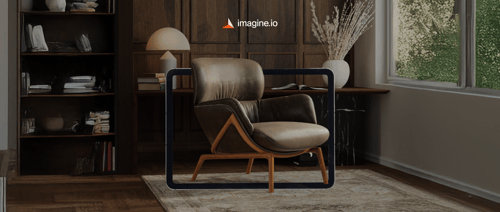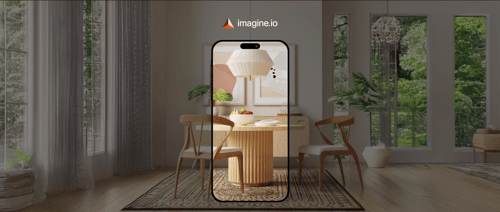Studio photography is the backbone of compelling visual content—whether it's powering an eCommerce catalog, building brand identity for a fashion label, or elevating editorial and marketing campaigns. But what many business leaders and brand managers don't see is the intricate cost structure behind those glossy product images.
In 2025, the economics of studio photography are evolving. Inflation, technological advancements, remote work, and shifting consumer behaviors have all impacted how studios price their services—and how brands manage these costs.
This guide breaks down every layer of studio photography expenses: from rental and staffing to shipping and post-production. Whether you're outsourcing or considering building an in-house studio, understanding these numbers can help you budget more efficiently and scale more strategically.
Get the latest updates straight to your inbox.
By clicking sign up you'll receive occasional emails from imagine.io. You always have the choice to unsubscribe within every email you receive.
Studio Rental: Location-Driven and Time-Based

Studio rental prices are perhaps the most variable line item in your photography budget. Geography plays a big role here.
In hubs like New York, Los Angeles, or Austin, hourly rental rates can range anywhere from $25 to $1,500, depending on the space, amenities, and local demand. On average, brands can expect to pay around $174/hour, based on data from platforms like Giggster.
What drives the cost?
- Size of the studio
- Included gear (lighting, backdrops, props)
- Location accessibility (downtown vs. outskirts)
- Staff support availability
Some studios, like Mill Street Photography in Austin, offer discounts for multi-hour sessions—for instance, $80/hour for two photographers with a 3-hour minimum. This kind of pricing flexibility is common in the industry, especially for recurring clients.
For businesses looking for a dedicated space, monthly rentals range between $1,000 to $5,000, with premium spaces in major metros commanding higher rates. Monthly agreements often include utilities, high-speed internet, and access to equipment—making them more cost-effective for brands with ongoing photography needs.
Staffing: Balancing In-House and Freelance Talent
People are the most important part of the photography equation—and also one of the most expensive.
Full-time photographers in the U.S. command salaries from $40,000 to $80,000 annually, based on location and specialization. Add in a retoucher (typically earning $30,000 to $60,000/year) and you’ve already got a sizable investment.
You’ll also need to account for assistants, stylists, set designers, and art directors—roles that may be hired per project or retained on staff, depending on your studio setup.
That’s why many brands opt for freelancers, especially for seasonal campaigns or limited product runs:
- Photographers: $300 to $1,500/day
- Retouchers: $20 to $60/image
- Stylists/Assistants: $200 to $600/day depending on expertise
The freelance model gives you agility—but it can become unpredictable if you’re scaling content or managing dozens of SKUs.
Equipment and Maintenance: CapEx vs. Ongoing Costs
A studio is only as good as its gear. Initial setup costs for a mid-to-high-end studio typically fall between $20,000 to $50,000. Here’s where the money goes:
- DSLR or Mirrorless cameras: $2,000–$6,000 each
- Specialty lenses: $1,500–$3,000
- Strobe lighting systems: $2,000–$10,000
- Backdrops, modifiers, and grip gear: $2,000+
- Editing workstations: $3,000–$8,000
Then come the annual maintenance costs: lens calibration, sensor cleaning, equipment insurance, and software licenses. Expect to spend $500 to $1,000/year, minimum.
Software is another ongoing cost. Most studios rely on Adobe Creative Cloud—ranging from $50 to $500/month, depending on the number of users and services included.
Shipping and Handling: The Hidden Line Item

One cost often overlooked in photography planning is shipping. Whether it’s sending products to the studio or returning them to warehouses, these logistics add up. Here’s a quick breakdown:
- Shipping per item: $15 to $30 (varies based on weight and distance)
- Special handling (fragile/oversized): Can increase costs 2–3x
- Packaging materials: $500 to $2,000/month if you’re photographing hundreds of SKUs
Custom foam inserts, branded boxes, labeling—all necessary for high-volume studios—can quietly eat into your monthly ops budget.
Post-Production: The Cost of Perfection
Here’s the thing: Great photography doesn’t end with the shutter click. Post-production—the editing, color grading, blemish removal, background cleanup—can represent 20–30% of your total photography budget. And it’s essential if you're shooting for high-conversion eCommerce or fashion campaigns.
- Basic editing is often bundled into photography day rates.
- Advanced retouching typically costs $20 to $60/image.
- Rush edits (24–48 hours turnaround) can add $10 to $20/image.
Larger studios may hire in-house editors to manage bulk image volumes. This gives you more quality control and often better long-term ROI.
Total Operating Costs: A Real-World View
Bringing it all together, the total annual cost to run a studio ranges between $75,000 and $180,000. Here's how it typically breaks down:
|
Cost Category |
Range (Annually) |
|
Studio Rental |
$12,000 – $60,000 |
|
Staffing |
$30,000 – $80,000 |
|
Equipment + Software |
$20,000 – $50,000 |
|
Shipping + Packaging |
$6,000 – $24,000 |
|
Post-Production |
$7,000 – $25,000 |
The final figure depends on whether you’re running lean or going enterprise—and how much of your process is in-house vs. outsourced.
How Platforms Like imagine.io Help Lower These Costs
With the rise of virtual production and 3D content creation, companies like imagine.io are helping brands reduce physical photography costs. By enabling photo-realistic 3D visuals, lifestyle scenes, AR experiences, and product configurators from a single platform, brands no longer have to manage every part of the traditional studio workflow.
It’s not just about cost-saving. It’s about speed, scalability, and creative freedom—without compromising on quality.
Final Thoughts
Studio photography remains an essential investment for brands. But the key to long-term efficiency lies in understanding the full picture—from rental and labor to software and shipping.
Whether you’re exploring a full studio build or looking for smarter alternatives, knowing where every dollar goes empowers better decision-making. Platforms like imagine.io are redefining how brands create content—turning physical limitations into digital opportunities. If you're exploring ways to cut costs, increase output, and stay ahead in the content economy…
Ready to Rethink Studio Photography? Let’s explore how imagine.io can support your team’s visual goals with next-gen 3D and AI tools. Book a Demo today!


.gif?width=1296&height=1296&name=Untitled%20design%20(8).gif)




.png?width=500&name=How%20to%20Add%20a%203D%20Product%20Configurator%20to%20Your%20WordPress%20Website%20(Complete%20B2B%20Guide).png)
















%20(1).png?width=500&name=Why%20Exploded%20Mattress%20Views%20Matter%20(And%20How%20to%20Generate%20Them)%20(1).png)
.png?width=500&name=Best%20Shopify%20Product%20Configurator_%20How%20to%20Choose%20the%20Right%20One%20(2).png)
.png?width=500&name=Why%20Exploded%20Mattress%20Views%20Matter%20(And%20How%20to%20Generate%20Them).png)



.png?width=500&name=Best%20Shopify%20Product%20Configurator_%20How%20to%20Choose%20the%20Right%20One%20(1).png)







.png?width=500&name=How%203D%20Rendering%20Can%20Make%20or%20Break%20Your%20Industrial%20Design%20Pitch%20(1).png)








%20with%20Digital%20Twins%20and%203D%20Visualization.png?width=500&name=Optimizing%20Your%20Digital%20Asset%20Management%20(DAM)%20with%20Digital%20Twins%20and%203D%20Visualization.png)




.png?width=500&name=Styling%20Home%20Decor%20for%202025_%20From%20Global%20Influences%20to%20Playful%20Personalization%20(1).png)
